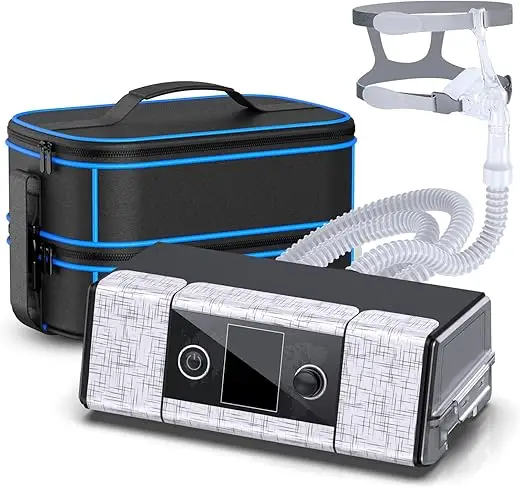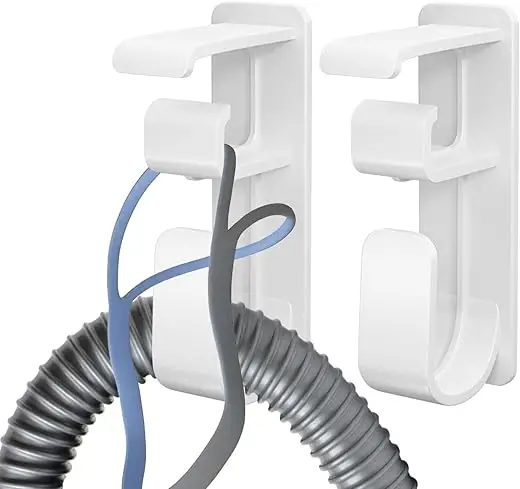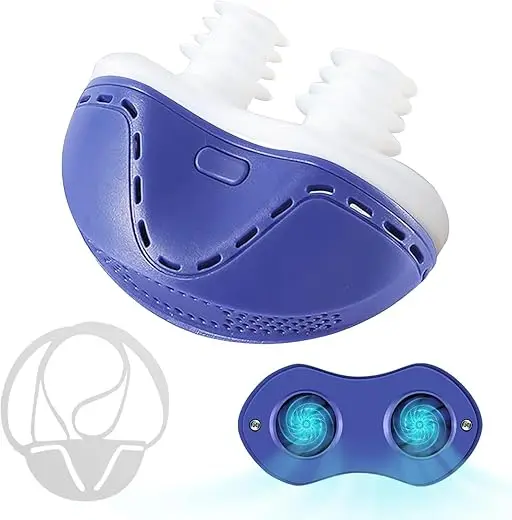Understanding Sleep Apnea and Breathing Machines
Sleep apnea is a common but often overlooked condition that affects millions of people worldwide. It is characterized by interruptions in breathing during sleep, leading to fragmented rest and serious health issues such as heart disease and diabetes. Understanding this condition is crucial for anyone experiencing excessive daytime sleepiness, loud snoring, or other related symptoms.
Breathing machines, particularly Continuous Positive Airway Pressure (CPAP) devices, play a vital role in the management of sleep apnea. These innovative tools help maintain an open airway, ensuring that individuals can enjoy restful sleep and improve their overall health. In the following sections, we will explore how these machines work, their myriad benefits, and the challenges users may face. Dive deeper with us into the world of sleep apnea and discover the life-changing potential of breathing machines.




What is Sleep Apnea?
Sleep apnea is more than just a snoring problem; it’s a serious sleep disorder that leads to repeated interruptions in breathing during sleep. There are three primary types of sleep apnea:
Obstructive Sleep Apnea (OSA)
This is the most common form, occurring when the muscles at the back of your throat relax excessively, blocking the airway. This can lead to gasping or choking sounds and often wakes a person up many times throughout the night.
Central Sleep Apnea (CSA)
Unlike OSA, CSA occurs when the brain fails to send signals to the muscles that control breathing. This can be particularly dangerous as it may happen without sheer physical blockages.
Complex Sleep Apnea
Also known as treatment-emergent central sleep apnea, this type presents a combination of both obstructive and central sleep apnea.
Common symptoms of sleep apnea include:
Understanding these symptoms is vital. People often dismiss sleep apnea as a mere nuisance, unaware that it can severely impact health and quality of life. As we move forward, we’ll delve into the importance of a proper diagnosis to identify and treat this condition effectively.
The Importance of Diagnosis
Diagnosing sleep apnea is crucial for effectively managing the disorder and preventing its serious health implications. Many individuals remain unaware they have this condition until it becomes severe, possibly leading to chronic health issues such as hypertension, heart disease, or diabetes.
Common Diagnostic Tests
Diagnosis typically involves two primary tests:
Equally important is recognizing the signs of untreated sleep apnea. Persistent fatigue, mood swings, and impaired cognitive function are just a few areas affected by this health issue. Identifying sleep apnea early on can lead to timely treatment interventions, significantly improving one’s overall health and quality of life.
As we explore further, we will investigate the breathing machines available for sleep apnea treatment—understanding how they work and their benefits for those diagnosed with this potentially debilitating condition.
Overview of Breathing Machines
When it comes to managing sleep apnea, breathing machines are essential tools that can help reclaim restful nights. The most prevalent among these devices is the Continuous Positive Airway Pressure (CPAP) machine, which uses a steady stream of air to keep the airway open during sleep. Users often find that just a week of consistent use can lead to markedly improved energy levels and mood.
BiPAP Machines
For those who require more advanced settings, BiPAP (Bilevel Positive Airway Pressure) machines are available. These machines provide two levels of air pressure: a higher pressure for inhalation and a lower pressure for exhalation, making it easier to breathe naturally. They are particularly beneficial for patients with complex sleep apnea or other respiratory disorders.
APAP Machines
Another option, APAP (Automatic Positive Airway Pressure) machines, automatically adjust the air pressure throughout the night based on the user’s breathing patterns. This adaptability can provide a customized solution that enhances comfort and efficacy.
Understanding the functionalities of these machines allows users to select the most appropriate device for their needs. Each type has its unique benefits and is tailored for different levels of comfort and complexity, which we will explore further in the next section.
How CPAP Machines Work
CPAP, or Continuous Positive Airway Pressure machines, are ingenious devices designed to maintain unobstructed airflow during sleep, ensuring steady breathing. Here’s how they operate:
Airflow Mechanics
At the heart of a CPAP machine is a motor that generates a constant stream of air. This air pressure is set just above ambient levels, effectively splinting the airway open to prevent it from collapsing, a common issue in obstructive sleep apnea.
Role of Masks
Users typically wear a mask that connects to the CPAP machine. There are various styles available, including nasal masks, full-face masks, and nasal pillows:
Preventing Airway Collapse
By delivering continuous air pressure, CPAP machines prevent airway collapse. This allows for uninterrupted breathing, reduces the incidence of apnea episodes, and ultimately leads to a more restful night’s sleep.
Using a CPAP machine can dramatically transform the lives of those struggling with sleep apnea. As we move forward, we will explore the myriad benefits of these breathing machines, making it clear why they have become a cornerstone in sleep apnea treatment.
Benefits of Using a Breathing Machine
Using breathing machines, particularly CPAP and its alternatives, can have a profound impact on the lives of sleep apnea patients. Here are some key benefits:
Improved Sleep Quality
Regular use of a breathing machine significantly enhances sleep quality. Users often report deeper, more restorative sleep cycles, allowing them to wake up feeling refreshed.
Reduced Daytime Sleepiness
Patients frequently experience a noticeable reduction in daytime fatigue. With consistent nightly use, individuals find it easier to stay alert and focused throughout the day, leading to improved productivity.
Long-term Health Improvements
Breathing machines not only address immediate sleep issues but also contribute to long-term health. Studies indicate that effective treatment of sleep apnea can lower the risk of cardiovascular problems, diabetes, and other serious conditions associated with sleep disturbances.
Enhanced Mental Well-being
Improved sleep quality correlates with better mental health. Users often experience fewer mood swings and lower rates of anxiety and depression, creating a more positive overall outlook on life.
Incorporating a breathing machine into one’s nighttime routine is a big step toward reclaiming restful sleep and overall health. As we look ahead, let’s delve into the challenges and considerations associated with these devices, ensuring users have the necessary strategies for successful management.
Challenges and Considerations
Using a breathing machine, although life-changing, comes with its own set of challenges. Understanding these can help users navigate the complexities of treatment effectively.
Discomfort and Adjustments
Many users report initial discomfort when using their machines. Finding the right mask fit is crucial, as an improper seal can lead to air leaks and irritation. Experimenting with different styles—like nasal pillows versus full-face masks—can make a significant difference.
Adherence Issues
Adhering to nightly usage is key for success. Factors like travel, discomfort, or feeling overwhelmed can cause some users to skip treatments. Developing a consistent routine, even during busy times, and keeping the machine easily accessible can improve adherence.
Importance of Follow-Up
Regular follow-ups with healthcare providers are essential for ongoing support and adjustments. Providers can help troubleshoot issues and optimize machine settings, ensuring the device works effectively for the user’s specific needs.
Confronting these challenges head-on enhances treatment success, paving the way for exciting advancements in sleep apnea management, which we will explore in the next section.
Future Developments in Sleep Apnea Treatment
As research in sleep medicine progresses, innovative solutions for sleep apnea treatment are emerging that go beyond traditional breathing machines. These advancements are geared towards enhancing patient comfort, efficacy, and overall lifestyle integration.
Innovative Technologies
Alternative Therapies
With these promising advancements reshaping the landscape of sleep apnea treatment, individuals can look forward to more tailored and effective options. As we explore the importance of these therapies, it’s essential to embrace available treatments actively for a healthier sleep experience.
Embracing Treatment for Better Sleep Health
Addressing sleep apnea is crucial for improving overall health and quality of life. Breathing machines, particularly CPAP devices, offer effective solutions that can significantly enhance sleep patterns, reduce daytime fatigue, and lower health risks associated with untreated sleep apnea.
If you suspect you have sleep apnea or have been diagnosed, don’t hesitate to seek treatment. Embrace the opportunity for better sleep health and a brighter tomorrow. Remember, restful nights lead to energized days!




I love how this article breaks everything down! I’m amazed by how many people suffer from sleep apnea. The benefits of using a breathing machine seem to outweigh the challenges. I’m ready to make the leap!
Yesss! Go for it! Better sleep is life-changing. You won’t regret it!
Thanks for the feedback, Sophia! Embracing treatment can definitely lead to better sleep health.
This was a real eye-opener for me. I didn’t realize how sleep apnea could affect your overall health. I’m considering a sleep study now. Any advice on what to expect?
They’ll hook you up to some sensors, but you’ll be asleep for most of it!
Good to hear, Alex! During a sleep study, they’ll monitor your sleep patterns. It’s pretty straightforward.
I was nervous, but it was easier than I thought! Just try to relax.
Wow, I never really understood sleep apnea until I read this article! 😮 The part about how breathing machines work was super helpful. I’ve been dealing with sleep issues and I’m seriously considering a CPAP machine. Has anyone tried the Portable CPAP Machine with Humidifier? Is it worth it?
I have it too! I love that it has a humidifier. My nose used to get so dry, but this helps a lot!
I’ve used it for a few months now, and honestly, it’s been a game changer! Super easy to travel with. 🙌
Thanks for your comment, Emma! The Portable CPAP Machine with Humidifier is quite popular for its convenience and comfort.
Nice article! I appreciate the part about the importance of diagnosis. It’s so crucial to get that sorted before jumping into treatment. I wish I had known sooner!
Thanks, Natalie! Diagnosis is key to finding the right treatment.
Absolutely! I ignored my symptoms for years. Wish I had been proactive!
Interesting read! I had no idea sleep apnea was so common. I’m curious about the anti-snoring mouthpiece mentioned. Has anyone had success with it?
I’ve tried it, and it did help reduce my snoring, but it took a few nights to get used to it. Not a perfect solution, but better than nothing!
Great question, John! The FDA-Cleared Anti-Snoring Mouthpiece can be effective for some people.
This is a bit off-topic, but are there any upcoming developments in sleep apnea treatments? I feel like some new tech could really shake things up. 🤔
I heard there’s a new device that’s less intrusive than a CPAP. Hope it hits the market soon!
Great question, Chris! There are advancements in wearable tech and more personalized treatment plans being researched.
I’m still hesitant about using a breathing machine. I mean, it feels like a big commitment, right? What if it doesn’t work for me? 🤔